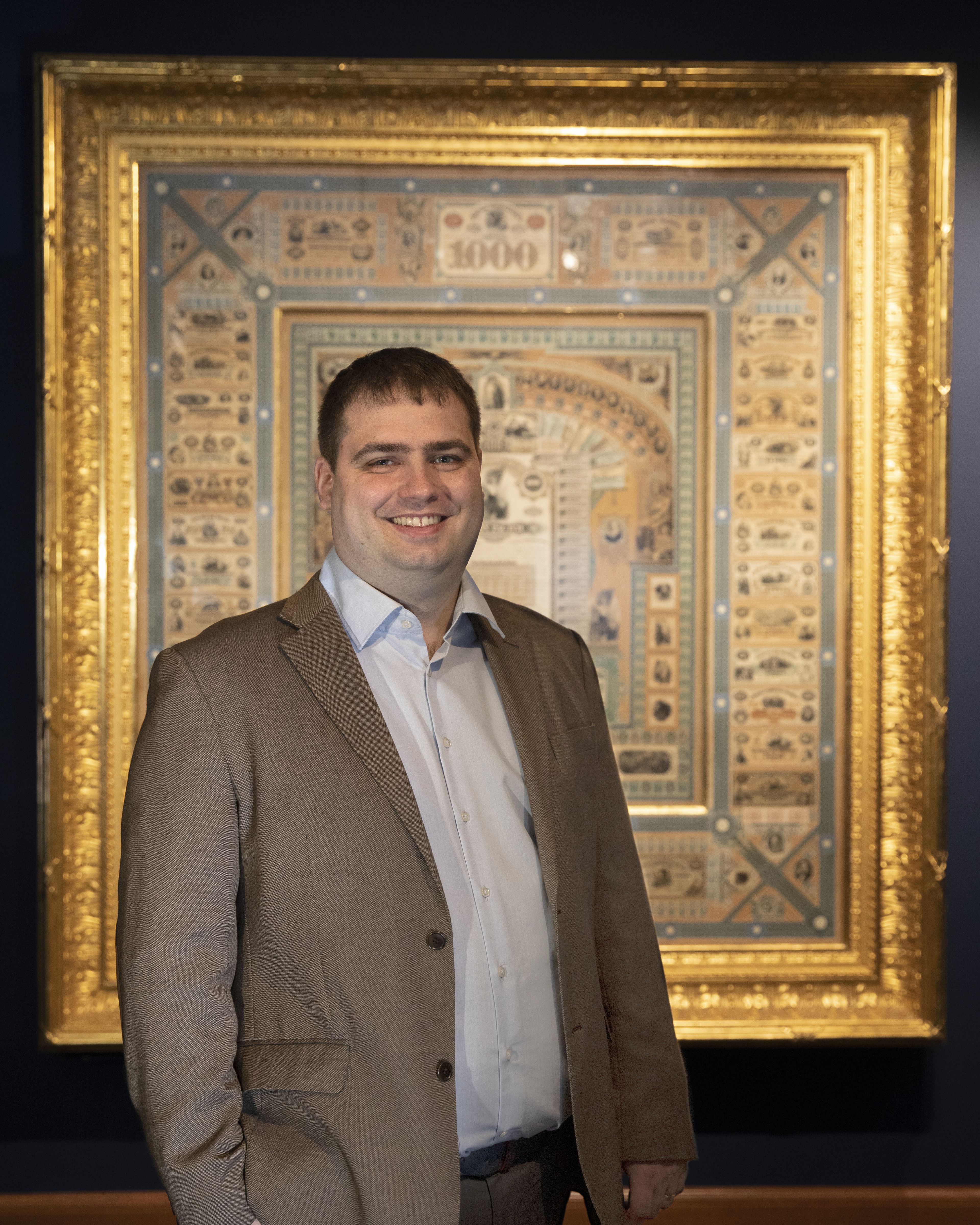Affiliation: Yale University Art Gallery

Dr. Benjamin Hellings is the Jackson-Tomasko Associate Curator of Numismatics at the Yale University Art Gallery and oversees the numismatics department. He holds both a Master’s and doctoral degree from the University of Oxford. He is a numismatist who has published on a subjects ranging from ancient Greek and Roman coins to colonial and modern American coins and bank notes. His research interests also include the quantification of ancient coin production and the economy, the circulation and use of ancient coins, and the use of numismatic “big data” for research and teaching, as well as in proof bank notes and related material. He currently serves as the Secretary of ICOMON (International Committee for Money and Bank Museums) and the Chair of the AIA (Archaeological Institute of America) Numismatics Interest Group. He is the Metcalf lecturer for the AIA’s 2023-2024 National Lecture Program
Large and active numismatic collections are far and few between: in the United States, there are only a handful of actively managed ones, with most being housed in a university. Yale University’s Numismatic Collection is preeminent and is unquestionably the largest University collection in the country. Although there are many numismatists and specialists of the ancient world who study coins, numismatic curators who work in the United States are much fewer in number.
This presentation will explore the history of the Yale Numismatic Collection, including coins from the Dura-Europos excavations, as well as the historic and present curation of the collection, including the management of physical storage, coin identification, publications, acquisitions and donations, exhibitions, and teaching. A behind-the-scenes overview of the first and only permanent numismatics gallery at an American university, which opened in May 2022, will also be presented.
Without mint or mining records, calculating the total quantity of produced coins in the ancient world cannot ever be precise so we must instead study the coins themselves to produce estimates. This has thus led to one of the great debates in numismatics: the methodology and implications calculating the total quantity of produced coins, with notable academics either arguing that it cannot be done or contesting the ways that meaningful results can be uncovered. These estimates can come through die-studies or through an analysis of the surviving number of coins in absolute terms. Each of these two methods has a different set of data, problems, and limitations, which are often easily missed or overlooked.
In this presentation I will demonstrate a method of using coin finds from northwest continental Europe to estimate Roman imperial coin production; a relative frequency calculation is presented with consideration of the duration of production periods. This method provides a glimpse into the operation of the imperial mint while also offering the potential to assess reasons for changes in coin production quantities. Since coins were issued in fluctuating quantities, it is imperative not only to consider the relative frequency in terms of absolute numbers but also to compare the relative frequency to adjusted per day calculations to account for different production lengths. When these fluctuated frequencies are assessed together with iconographic changes, metallurgical data, and hoarding patterns, we can further our understanding of why production rates may have changed, the nature of a particular change, and whether there was a grand Roman imperial ‘monetary policy’.
Many studies of the Roman monetary economy rely heavily on one type of coin find. Hoards are most frequently employed, with only occasional reference to several prominent sites and almost no mention of ‘stray’ finds. The important role played by archaeological numismatics has been increasingly recognized by scholars and has consequently started to reshape our thinking and approach. However, studies rarely utilize the full breadth of numismatic evidence, not least because of the immense labor required to gather and analyze the data. Big data that employs all types of coin finds has the potential to reevaluate our approach and, in Britain, the Portable Antiquities Scheme has demonstrated its capability to refine our perception of coin use across a large geographic area over the longue durée. Elsewhere for numismatic based research on the Empire, such approaches have been minimal.
In this presentation I employ big data and a macro-regional perspective to assess coin finds from the Rhine frontier in order to reconsider the impact and role of the military on the development of monetary economy during the first two centuries. An often argued and imposed connection between Roman conquest and immediate and widespread coin adoption and monetization is challenged.